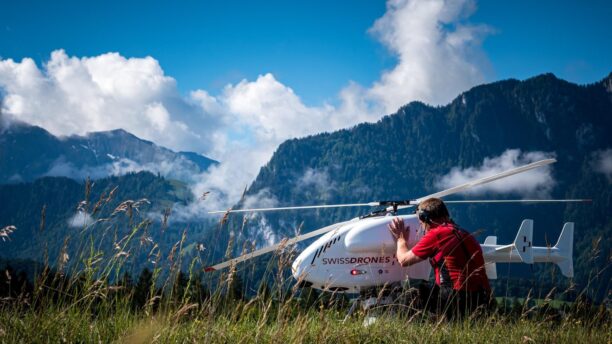At the AUVSI Drone and AAM Policy Symposium held July 29–30 in Washington, D.C., industry and government leaders gathered to discuss the future of uncrewed aircraft integration. The annual event brings stakeholders together to explore policy developments, with sessions covering regulatory progress, industry challenges, and what’s next for advanced drone operations.
Two key sessions addressed the anticipated FAA rulemaking for Beyond Visual Line of Sight (BVLOS) operations. The discussions revealed cautious optimism about how close the industry may be to a regulatory breakthrough—and offered practical advice on how stakeholders can influence the final rule.
“We’ve Never Been Closer”: FAA and Industry Leaders Weigh In
In a conversation between Chris Senn, Assistant Administrator at the FAA, and Matt McCardle, Director of Global Regulatory Strategy and Infrastructure for Amazon Prime Air, Senn stated that while he couldn’t say exactly when the long awaited – and long delayed – BVLOS NPRM would be released: “We’ve never been closer.”
Questioned on his thoughts about what influence Homeland Security has had on delaying the BVLOS NPRM, Senn did not comment – but did say that continued collaboration and open dialogue with federal partners, especially on topics like homeland security, are critical as the rule moves forward. Senn emphasized that industry and federal agencies will need to educate each other on their concerns in order to come to a rule that works.
What Comes Next: Preparing for the NPRM Comment Period
A second panel, “Commenting with Confidence,” gave attendees a deeper look into the rulemaking process itself. Panelists included experts from UPS Flight Forward, AUVSI, and law firm Wiley Rein. Their message was clear: once the Notice of Proposed Rulemaking (NPRM) is released, industry must respond with informed, constructive comments.
“This is a public process,” noted moderator Eric Bergesen of UPS Flight Forward. “When the NPRM is posted to the Federal Register, anyone can read the comments you submit.” Panelists emphasized that comments must be specific, supported by operational data, and clearly state their intent. Simply stating disapproval without evidence or alternatives will not be useful to the FAA – and is unlikely to lead to useful change.
Josh Turner of Wiley Rein pointed out that the comment process is based in law. The Administrative Procedures Act requires the FAA and other federal agencies to base regulatory decisions on evidence. That means every comment, whether positive or negative, should provide data and a rationale the FAA can point to in the public record. “The FAA needs evidence for why they do what they do.”
Participants also warned against remaining silent if a provision of the rule benefits your operations. “If there is something you like, there may be others who don’t,” said Scott Shtofman of AUVSI. “You need to make sure your view is represented.”
Another critical point was the potential impact of the rule on current drone operations. Operators should use the comment period to explain, with data, how the rule affects their businesses—positively or negatively. This ensures that the FAA has a complete understanding of how the proposed rule will work in practice.
Finally, the panel encouraged all interested parties—not just major organizations—to submit comments. Trade associations can help shape messaging, but individual voices carry weight, especially when supported by real-world data.
Read Before You Comment
With the BVLOS NPRM expected soon, industry stakeholders are eager to see what changes it proposes. However, experts caution that thoughtful participation begins with a full understanding of the rule – and especially the intent behind it. A well-informed comment—grounded in both policy and operational experience—has the best chance of shaping the final rule in a meaningful way.
As the FAA and industry continue to move closer to a comprehensive BVLOS framework, engagement in the rulemaking process is not just encouraged—it’s essential.
Read more:


Miriam McNabb is the Editor-in-Chief of DRONELIFE and CEO of JobForDrones, a professional drone services marketplace, and a fascinated observer of the emerging drone industry and the regulatory environment for drones. Miriam has penned over 3,000 articles focused on the commercial drone space and is an international speaker and recognized figure in the industry. Miriam has a degree from the University of Chicago and over 20 years of experience in high tech sales and marketing for new technologies.
For drone industry consulting or writing, Email Miriam.
TWITTER:@spaldingbarker
Subscribe to DroneLife here.


